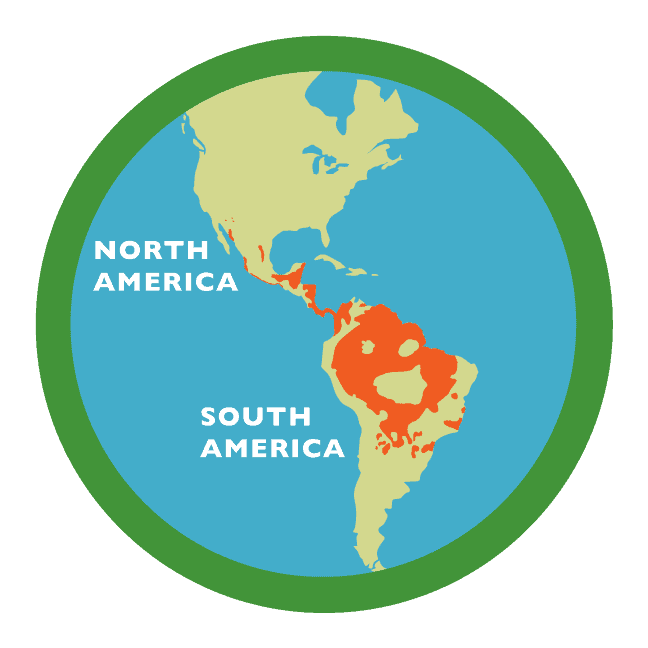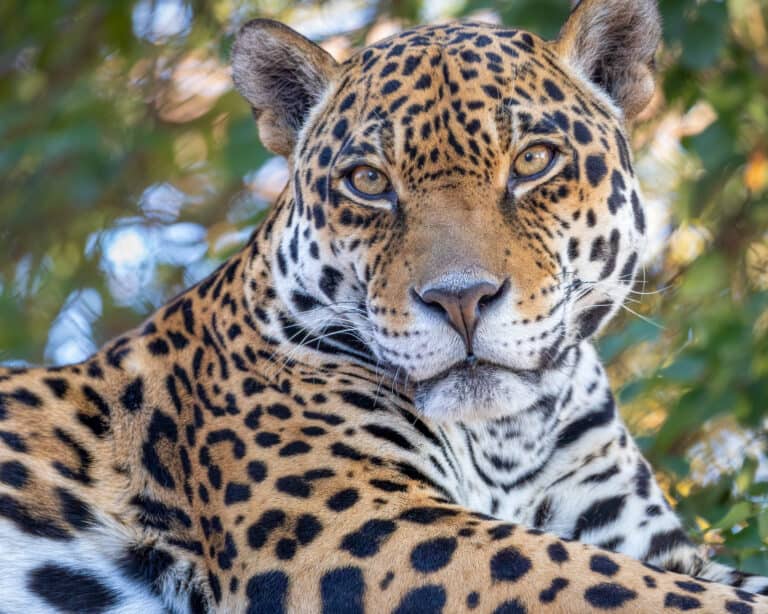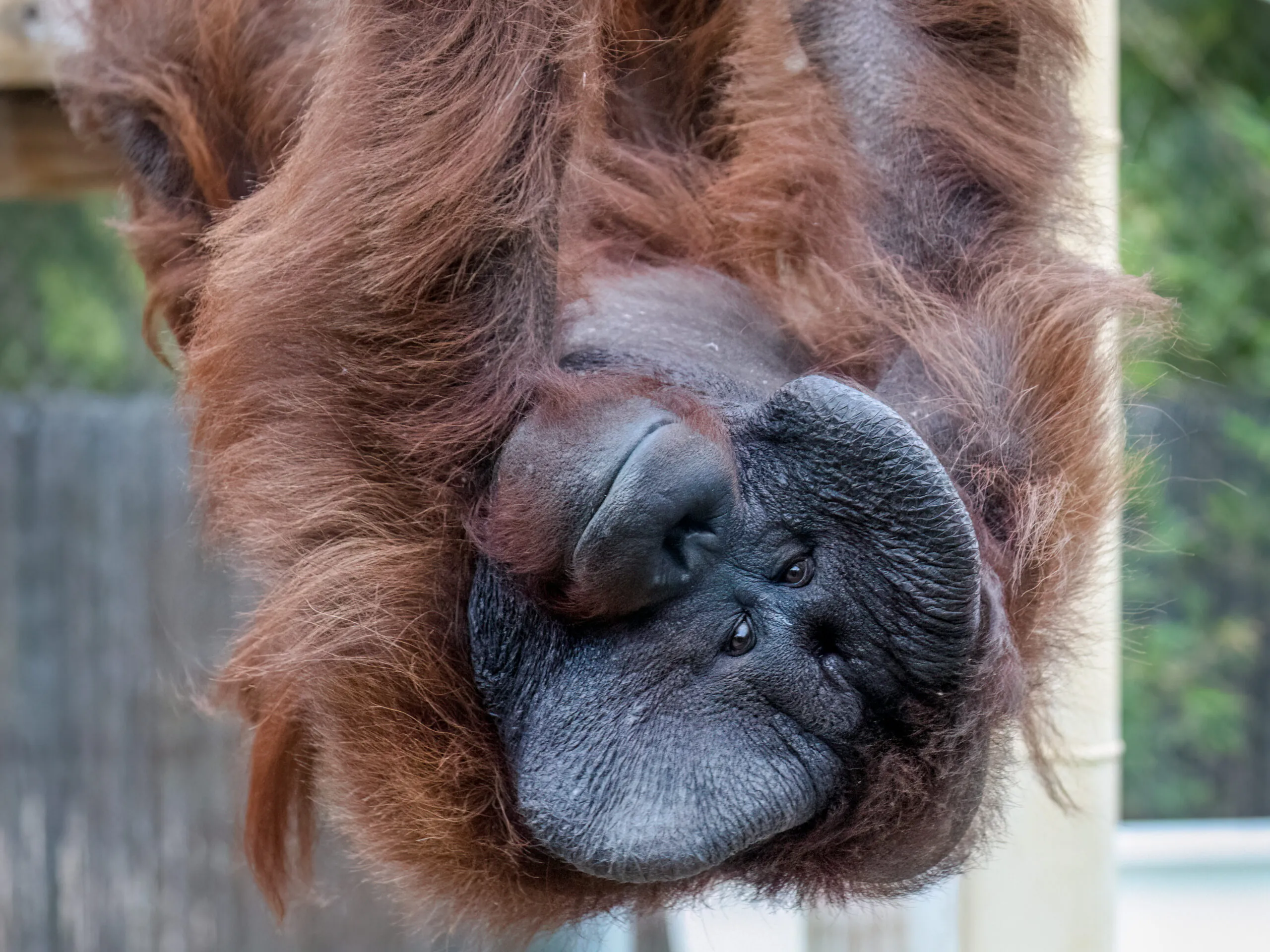Jaguar
Panthera onca
I’m an Excellent Swimmer
Unlike most cats, jaguars are excellent swimmers and often prey on aquatic creatures like fish, turtles and caiman (small alligators). They frequently hunt near lakes, rivers and wetlands, but they are opportunistic and will gladly prey on land animals as well. While jaguars can run quickly for short distances, they prefer to hide in dense forests and wait for their food to stroll by, then pounce on it.
Don’t Confuse Me With a Leopard
Jaguars and leopards have similar colors, and both have black rosette spots (roundish with uneven edges) on their coats, so the two are often confused. One difference is that jaguars have spots inside of the rosettes while leopards do not. The rosettes of a jaguar are also usually larger, with more space between them than a leopard’s. Jaguars also have bigger heads, stockier bodies and shorter tails. Lastly, the two species live in different regions – jaguars in the Americas and leopards in Africa and Asia.
I’m an Arizona Native
Many people are surprised to learn that jaguars are native to Arizona. In fact, their range once spanned from Argentina to the southern United States, including portions of California, New Mexico, Texas and Louisiana. In Arizona, they could be found as far north as the Grand Canyon. In recent years, there have been occasional individuals travelling from Northern Mexico into Southern Arizona. The Phoenix Zoo supports research in this borderlands region designed to better understand how jaguars and other mammals move through the landscape. The Zoo also supports jaguar conservation efforts through research and community outreach projects in Costa Rica that aim to protect vital jaguar habitat and reduce threats to their survival.

Diet: mammals, eggs, frogs, fish, reptiles, birds
Zoo Diet: specialized carnivore diet, whole prey, fish, bones
Habitat: forests, grasslands, wetlands
Weight: 100 – 250 lbs


Learn more about how the Zoo is helping jaguars

Plan your visit today!
The Phoenix Zoo is one of the largest non-profit zoos in the U.S., caring for over 3,000 animals, with nearly 400 species represented, including many threatened/endangered species.







